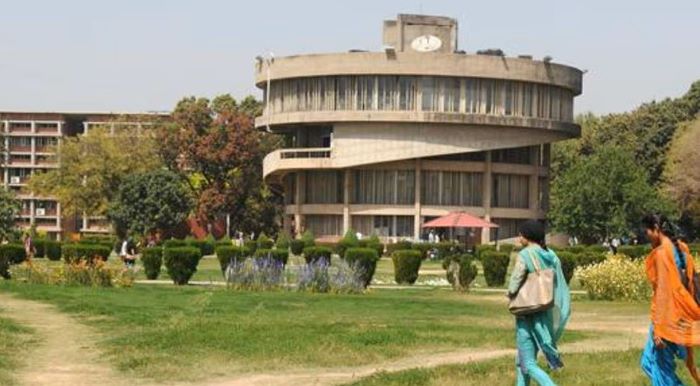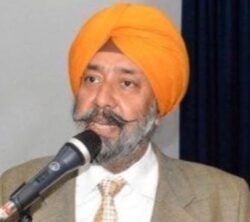 Panjab University in Chandigarh is a distinct legal entity from the pre-Partition University of the Punjab, Lahore. It was re-established through the Panjab University Act, 1947 (originally East Punjab Act 7 of 1947). The Act vests supreme authority in the Senate and lays out the structure for governance through the Chancellor, Vice-Chancellor, ex officio Fellows, and elected Fellows.
Panjab University in Chandigarh is a distinct legal entity from the pre-Partition University of the Punjab, Lahore. It was re-established through the Panjab University Act, 1947 (originally East Punjab Act 7 of 1947). The Act vests supreme authority in the Senate and lays out the structure for governance through the Chancellor, Vice-Chancellor, ex officio Fellows, and elected Fellows.
A second constitutional layer arrived with the Punjab Reorganisation Act, 1966, which designated PU as an inter-State body corporate. Since then, the Union government has periodically issued notifications adjusting the University’s governance framework. This has been both the source of its legal uniqueness and the cause of its recurring tensions with the State of Punjab.
Inter-State Body: Who, Then, Is in Charge?
Because PU is an inter-State body, its Chancellor is the Vice-President of India, and the Vice-Chancellor is appointed by the Chancellor. The university’s affiliation footprint today includes all UT Chandigarh colleges, along with regional centres in Ludhiana and Hoshiarpur in Punjab. Haryana has long since withdrawn its colleges, leaving the institution functionally rooted in Punjab and Chandigarh.

What the Senate Used to Be—and Why It Matters
Under the 1947 Act, the Senate is the supreme authority of the University, responsible for the management and superintendence of all affairs. It includes both ex officio and elected Fellows, with a distinctive democratic feature—members elected by registered graduates—symbolising the university’s living bond with its alumni and wider public. The Syndicate serves as the executive arm, chaired by the Vice-Chancellor and including senior education officials and elected members of the Senate. The abolition or dilution of these elected channels therefore strikes at the very foundation of PU’s democratic and participative character.
Graduate Representation: What Existed vs What Was Proposed
What existed. In the long-standing arrangement, the Senate was a large body of roughly ninety members. Of these, fifteen Fellows were elected directly by registered graduates—the celebrated “graduate constituency.” Those seats were distributed across the region so that graduates from Punjab, UT Chandigarh and the adjoining areas had a defined voice. In practice, this bloc was the single largest directly elected constituency in the Senate, sitting alongside elected representatives of university teachers, principals and teachers from affiliated colleges, plus nominated and ex officio members.
What was proposed (now withdrawn). The October 2025 notification sought to abolish the graduate constituency altogether and shrink the Senate to a compact council of about thirty-one. Within that smaller body, eighteen would have been elected (largely from faculty and college stakeholders), six nominated, and seven ex officio—including, for the first time, the Chandigarh Lok Sabha MP, the UT Chief Secretary and the UT Education Secretary. Alumni representation would have shifted from an open electoral franchise to limited nominations, ending the practice of graduates periodically voting Fellows into the Senate. The logic claimed was “efficiency” and “streamlining”; the effect would have been to remove the ballot from alumni and concentrate discretion in nominating authorities.
What Do the Senate and Syndicate Actually Do?
The Senate—supreme authority and policy compass. By statute, the Senate holds the entire management and superintendence of the University’s affairs, concerns and property. In operational terms, this means: setting policy; framing or approving statutes and regulations; approving new faculties, departments and programmes; supervising standards across affiliated colleges; passing key financial decisions at a high level; and constituting, or electing to, major boards and committees. In the classic PU model, the Senate’s broad representative base ensured that students (through graduate-alumni votes), teachers, principals and public figures were all present when academic priorities and resource allocations were debated.
The Syndicate—executive government. The Syndicate is the University’s executive authority. It translates Senate-approved policy into action: executing budgets; making and ratifying appointments within laid-down rules; handling service matters and promotions; granting affiliations and approvals within policy; overseeing examinations and administrative processes; and taking urgent executive decisions subject to Senate oversight. Traditionally at PU, the Syndicate drew substantially from elected Fellows, ensuring that the executive reflected the Senate’s representative character. The October 2025 proposal would have recast it as a largely nominated body, with expanded scope to delegate executive functions to the Vice-Chancellor or sub-committees—a material shift in where day-to-day authority resides.
Where does Punjab fit in these levers? The appointment of the Vice-Chancellor is the Chancellor’s prerogative under the Act. The Punjab government’s influence operates through ex officio representation (for example, the state Director of Public Instruction and other state education functionaries in the Syndicate/Senate structure), through the funding compact it shares with the Centre and the University, and through its voice in inter-governmental consultations that shape notifications and statutes. In short: Punjab does not appoint the VC, but it does have institutional seats, fiscal stakes and political voice in how PU is run.
What Changed—and What Changed Back
In late October 2025, the Central Government invoked its powers to restructure PU’s Senate and Syndicate. The notification abolished the graduate vote, reduced the Senate’s size dramatically, and re-engineered the Syndicate into a chiefly nominated executive—adding new ex officio seats linked to UT administration and permitting broader delegation to the Vice-Chancellor.
Following widespread protests by students, faculty and political parties, the government withdrew the notification in early November 2025, effectively restoring the earlier structure. While this was hailed as a victory, it was essentially a return to status quo, not a forward-looking reform.
Status Update: Senate Elections Initiated as per Official Twitter
Panjab University has begun the Senate election process, with a draft schedule—following the previous pattern—submitted to the Chancellor (the Vice-President of India) for approval. Registrar Prof. Y. P. Verma has appealed for calm and urged all students and organisations to ensure academic activities continue uninterrupted. The Dean Student Welfare (DSW) met student organisations and requested that they withdraw their protest; in response, the groups have assured that any demonstration will remain orderly and disciplined.
Is PU Among India’s Top 10?
By national and global standards, PU has a road to travel. In recent national rankings, the university hovered around the 60th slot overall, though it remains within the top handful of state public universities. In global rankings, it is in the 1001–1200 bracket. If PU aspires to be world-class, it must relentlessly drive research output, international collaborations, faculty strength, doctoral throughput, and student success—not just win skirmishes over governance optics.
Who Pays—and Who Sways?
The university’s finances reveal the real levers of influence. PU’s budget is sustained by internal revenues, significant Union funds (UGC and national schemes), and a defined contribution from the Punjab government. Delhi’s footprint is thus deep; Punjab’s is both symbolic and material. The lesson is simple: co-ownership must translate into co-responsibility—for steady financing, transparent spending, and measurable outcomes.
Representation Is Vital—But Representation of What?
Restoring the graduate vote feels like a moral victory. Yet what the Senate decides is more important than who reaches the chairs. A serious Senate agenda must prioritise:
Performance compacts: annual, published targets tied to research, faculty development and placement outcomes;
Research financing: alumni endowments, industry consortia and national mission grants;
Affiliation quality: clear baselines and consequences for underperformance across Ludhiana–Hoshiarpur–Chandigarh;
Student success: placements, internships and entrepreneurship treated as core academic business.
Four Tests for Any Reform
1. Democratic legitimacy with expertise. Preserve elected graduate and faculty representation; complement it with fixed-term, skill-screened nominees in research commercialisation, internationalisation and digital learning.
2. Fiscal clarity and fair sharing. Publish a three-year financing compact among UGC, Punjab and PU, with rolling targets and quarterly dashboards.
3. Statutory discipline, not executive zig-zags. If reforms are needed, do them through the proper legislative route. Stability is the hallmark of institutional governance.
4. Ranking and quality targets. Set measurable goals—Top 30 in NIRF by 2027; Top 800 in QS by 2028—and align promotions, incentives and resource allocation to those goals.
What Punjabis Should Really Agitate For
Students and alumni must go beyond the emotional defence of their voting rights. The demand should evolve into a call for comprehensive reform:
A clear election calendar under the restored rules;
A consultative reform bill balancing democracy with expertise;
A joint funding framework between the Centre and Punjab tied to performance;
A mission for academic excellence across all affiliated colleges.
Such goals align with Punjab’s true interests—reviving the prestige of a university that once symbolised its intellectual pride.
The Bottom Line: Fly the Flag by Lifting the Game
Panjab University’s fight must not be reduced to a binary contest between Punjab and Delhi or between symbolism and control. It should be a battle for quality, autonomy and accountability. The University already has the instruments: the Senate as the supreme authority, the Syndicate as the executive government, and the Chancellor–Vice-Chancellor axis as the leadership core. The challenge lies in using them effectively.
In the end, representation without reform is hollow. The real victory will not be counted in gazette notifications but in the university’s global standing. Punjab must, therefore, fight not for crumbs of symbolism, but for the restoration of genuine academic excellence—its true flag.